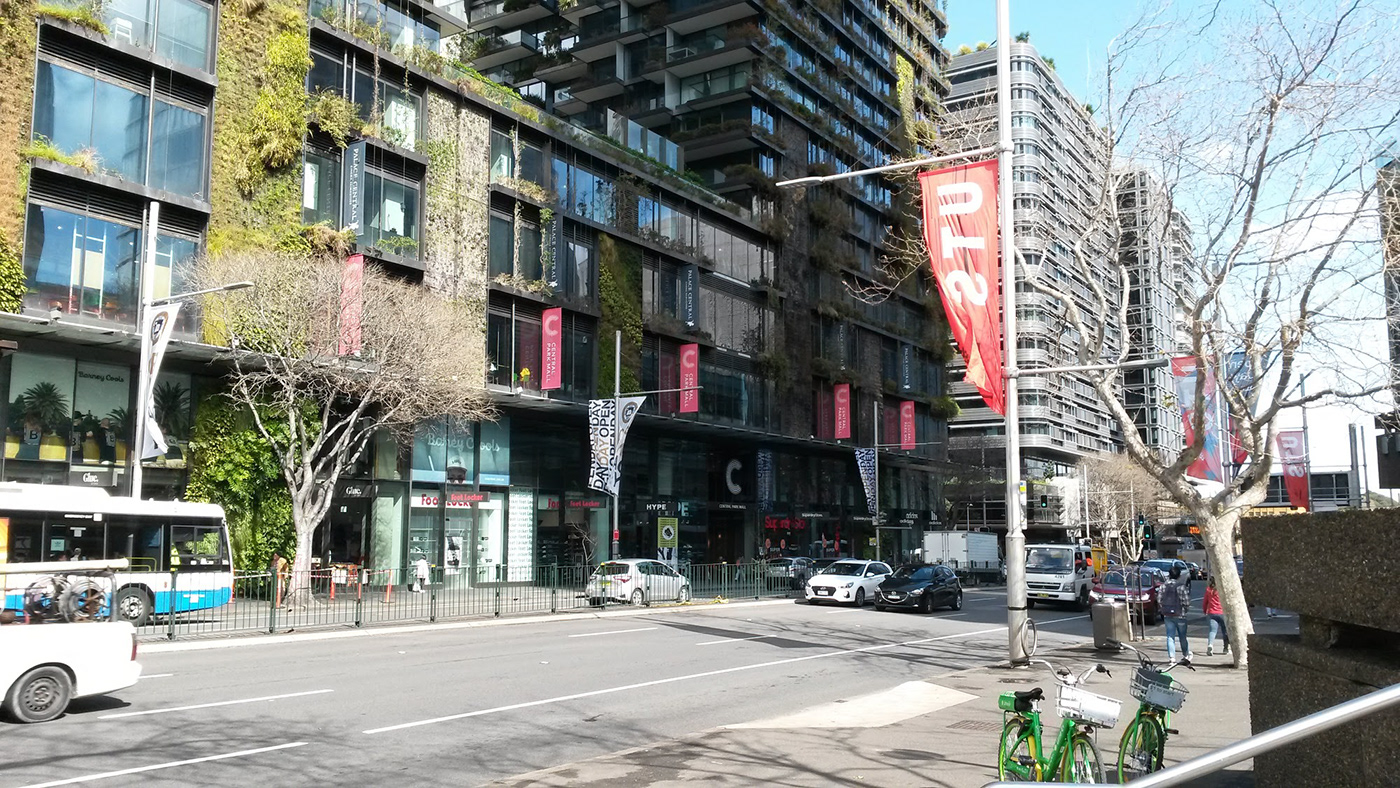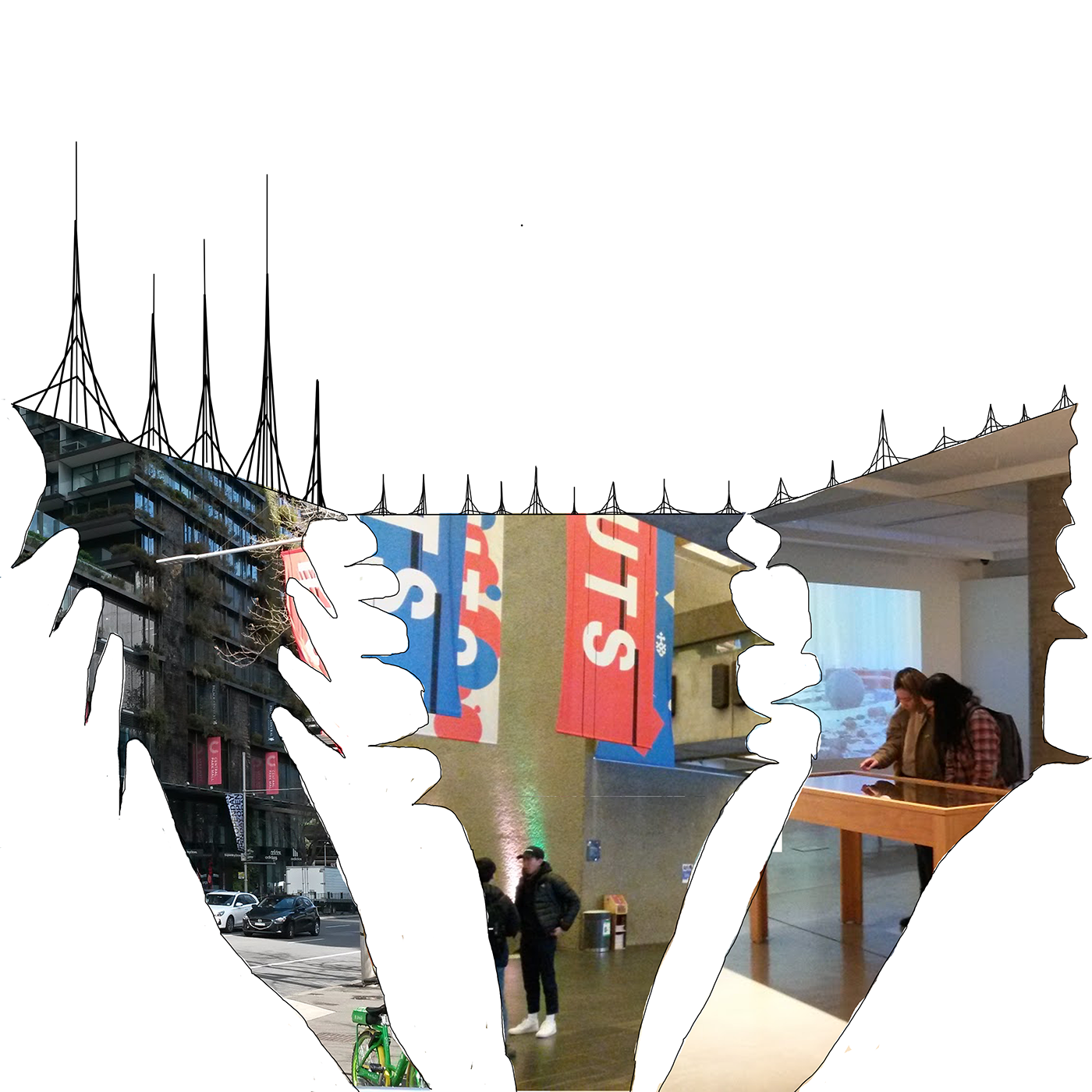Sound & Ambience - Xenakis (2019)
Practitioner: Iannis Xenakis
Iannis Xenakis was a Greek composer, music theorist, architect, performance director and engineer. Xenakis pioneered the use of mathematical models in music such as applications of set theory and game theory and was also an important influence on the development of electronic music. He integrated music with architecture, designing music for pre-existing spaces, and designing spaces to be integrated with specific music compositions and performances.
Xenakis seems to use his composing process as a way of discovery and investigation. This process is an ongoing search for new sonic materials as yet untested as musical matter. In every one of his works there is sense a passion for discovery, the discovery of previously hidden or even completely unimagined facets of our aural experience.
VISUAL ANALYSIS

Metastaseis (1953-54)
Metastaseis (1953-54) was a sound piece written for 61 orchestral players (46 strings), with each playing a different part. The visual score uses multiple glissandi (straight lines) in the music for string and horn parts. These indicate for the player to begin at a certain pitch and slide through all the frequencies on the way to a different pitch (could be higher or lower). Xenakis realizes that drawing the glissandi in the score can create a special surface of straight lines, called a ruled surface. This was the inspiration for his design of the Philips Pavilion. He thought of the glissandi as graphs of straight lines (time on the horizontal axis, pitch on the vertical), where different slopes correspond to different “sound spaces.” The focus of the piece is on mass of sound and timbre, rather than individual pitches.
Xenakis uses pitches based on 12-note rows and assigned durations using the Fibonacci sequence and the golden section, a concept already utilised by earlier composers such as Debussy and Bartók, and one which Xenakis also employed in some of his architectural designs.
Metastaseis was also inspired by the combination of an Einsteinian view of time and Xenakis' memory of the sounds of warfare, and structured on mathematical ideas by Le Corbusier. Xenakis wished to reconcile the linear perception of music with a relativistic view of time. The particular sequence of shots was unimportant: the individual guns could have fired in a completely different pattern from the way they actually did, but the sound produced would still have been the same. These ideas combined to form the basis of Metastaseis.
As Newtonian views of time show it flowing linearly, Einsteinian views show it as a function of matter and energy; change one of those quantities and time too is changed. Xenakis attempted to make this distinction in his music. While most traditional compositions depend on strictly measured time for the progress of the line, using an unvarying tempo, time signature, or phrase length, Metastaseis changes intensity, register, and density of scoring, as the musical analogues of mass and energy.
The Philips Pavilion is based off of Metastaseis through the use of hyperbolic paraboloids
The second movement does have some sort of melodic element. A fragment of a twelve-tone row is used, with durations based on the Fibonacci sequence.
Xenakis, an accomplished architect, saw the chief difference between music and architecture as that while space is viewable from all directions, music can only be experienced from one. The preliminary sketch for Metastaseis was in graphic notation looking more like a blueprint than a musical score, showing graphs of mass motion and glissandi like structural beams of the piece, with pitch on one axis and time on the other. In fact, this design ended up being the basis for the Philips Pavilion, which had no flat surfaces but rather the hyperbolic paraboloids of his musical masses and swells. Yet unlike many avant-garde composers of this century who would take such a thing as the completed score, Xenakis notated every event in traditional notation.

Pithoprakta (1955–56)
Pithoprakta, composed in 1955, is for 49 musicians—2 trombones, xylophone/woodblock, and 46 strings—where each instrument is conceived as an independent molecule following the Maxwell-Boltzmann distribution law. This law describes the probable velocity ranges of particles moving within an idealized gas at thermodynamic equilibrium. These ranges differ based on the temperature and pressure of the gas. In Pithoprakta, Xenakis divides the work into sections each with their own temperature and pressure parameters and calculates the velocity ranges of 1148 theoretical particles, according to the Maxwell-Boltzmann law. He graphed these calculations with the vertical axis representing the speed of the particle and the horizontal axis representing time. An example of this can be seen in Figure 1. These measurements were then connected with lines to show how the velocities change over time based on the temperature/pressure parameters.
Xenakis then transcribed these to musical notation, mapping the particle velocities to frequencies. Each vertical square represented a major third (¼ square per semitone) and every five horizontal squares represented one measure. The lines drawn between the plot points were, therefore, represented by the instruments playing glissandi between the indicated frequencies. Figure 2 shows the same section from Figure 1, in musical notation. This was an early example of sonification, in which data is mapped to sonic parameters to be heard rather than read.
The word Pithoprakta translates to "actions through probability". This relates to Jacob Bernoulli's law of large numbers which states that as the number of occurrences of a chance event increases, the more the average outcome approaches a determinate end.
Pithoprakta is an example of a stochastic work. Stochastic processes are those which have a random probability distribution that may be analyzed statistically, but never predicted precisely. Examples include bacterial growth patterns, electrical current fluctuation, and—in the case of Pithoprakta—the movement of particles within a fluid.
In Pithoprakta, Xenakis uses a specific mathematical process to determine the resulting notes. However, the process doesn’t give a specific answer but, rather, a range of probabilistically weighted answers. In this way, Pithoprakta bridges the gap between deterministic music and indeterminate “chance” music.
The piece is based on the statistical mechanics of gases, Gauss's law, or Brownian motion. Each instrument is conceived as a molecule obeying the Maxwell–Boltzmann distribution law, with Gaussian distribution of temperature fluctuation. This theory states that "the temperature of a gas derives from the independent movement of its molecules."
Xenakis drew an analogy between the movement of a gas molecule through space and that of a string instrument through its pitch range. To construct the seething movement of the piece, he governed the 'molecules' according to a coherent sequence of imaginary temperatures and pressures. Brownian motion is a four-dimensional phenomenon (three spatial dimensions and time), and Xenakis created the score by first creating a two-dimensional graph, necessitating some simplifications.
The abscissa (x) represents time at 5 cm = 26 MM, while the ordinates (y) represent pitch at 1 semitone = .25 cm. When transcribed into musical notation 5 cm = 1 measure. This length is subdivided into three, four, and five equal parts, allowing for fine differences in duration but also creating a steady pulse in each instrument part, reducing the rhythm of the random walk to steady footsteps. Composer Simon Emmerson notes that this regularity is "impossible in reality and fails to use his ‘stochastic’ approach in this instance." Each part gets nowhere, but as a whole the mass's pitch is freely modulated and its speed determined "temperature" varies.
Using this research and way of portraying sound and ambience, I recorded 3 different locations around the UTS Precinct (Broadway, UTS Tower Foyer and UTS D.A.B Gallery) where I recorded 10-second sounds of each location to create a final 30 second sound recording.
00:00 - 00:10 > Broadway

00:10 - 00:20 > UTS Tower Foyer

00:20 - 00:30 > UTS D.A.B. Gallery

FINAL SOUND PIECE: https://soundcloud.com/georgios-kallegeros/voice-001-1
Upon listening to the final sound piece, I noticed that each of the three 10-second sound pieces had various sound pitches depending on the surrounding ambience in which the sound piece was recorded. The Broadway sound pitched seem to be high given the amount of activity taking place there such as people walking and talking, cars driving past and the strong wind blowing. The UTS Tower Foyer sound clip seemed to be less noisy as the ambience was a large and quiet indoor space with people talking in a quiet and calm fashion. The UTS D.A.B. Gallery sound pitch was very low given that the ambience for that sound piece was a silent room for viewers of art and design to remain silent and observe the art and design that is put before the observers.
To graph the sound measurements, I used Audacity to determine the measurement of pitch in the three sounds.

00:00 - 00:10 > Broadway

00:10 - 00:20 > UTS Tower Foyer

00:20 - 00:30 > UTS D.A.B. Gallery

Final Sound Piece
The measurements were in the default waveform with a linear vertical scale running from -1.0 (negative values) to +1.0 (positive values), and is centred on zero.
These measurements were very useful in determining pitch but I felt that it was necessary to zoom into the measurements to further clarify the portrayal of sound pitches which will eventually become essential for my visual score.

High pitched measurements taken from 2 seconds of final sound piece (Broadway)

Medium pitched measurements at 11-12 seconds of sound piece (UTS Tower Foyer)

Low pitched measurements at 30 seconds of sound piece (UTS D.A.B. Gallery).

The final design piece was inspired by Xenakis' use of multiple glissandi (straight lines) and the hyperbolic paraloids that is clearly evident in Metastaseis. I also wanted my visual score to be and abstract work that also incorporates photography of the recorded locations.

Using Adobe Photoshop as a medium for my final design piece, I started by adding two diagonal lines and one horizontal line in the centre. This is due to the fact that I wanted the sound waves to dominate and surround the listeners. I also added tall vertical lines and short vertical lines as a basis for the sound waves. The tall and packed vertical lines come to represent loud sound pitches while small and spread-out sound waves symbolise a quiet ambience. These sound waves are meant to replicate the waveform measurements of my sound piece calculated by Audacity.
Using the Brush tool along with CTRL + Left click mouse button, I was able to develop the multiple glissandi that make up the correct sound waves for each location. I also used the Brush tool to draw the rough reflected outline of the sound waves, as if they are constantly making sound. I also added photography of the recorded locations into the reflection.
Reference List:
Delio, T. 2001, 'Xenakis', Perspectives of New Music, Vol. 39, No. 1, pp. 231-243.
Harley, J. 2004, Xenakis : his life in music, Routledge, New York.
Xenakis, I. 1992, Formalized music : thought and mathematics in composition, Pendragon Press, New York.
Emmerson, S. 2007, Living Electronic Music, Ashgate Publishing, Alderson.






